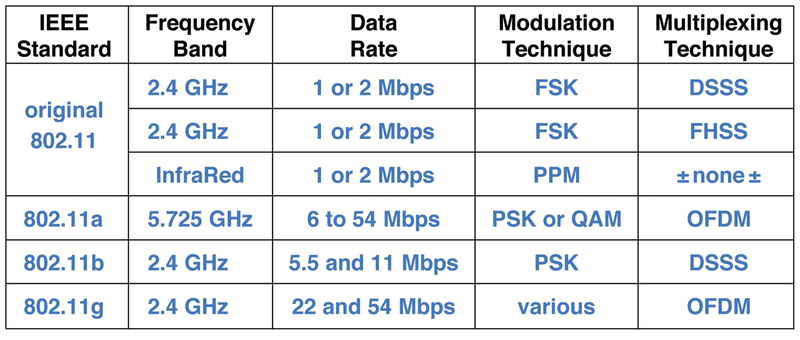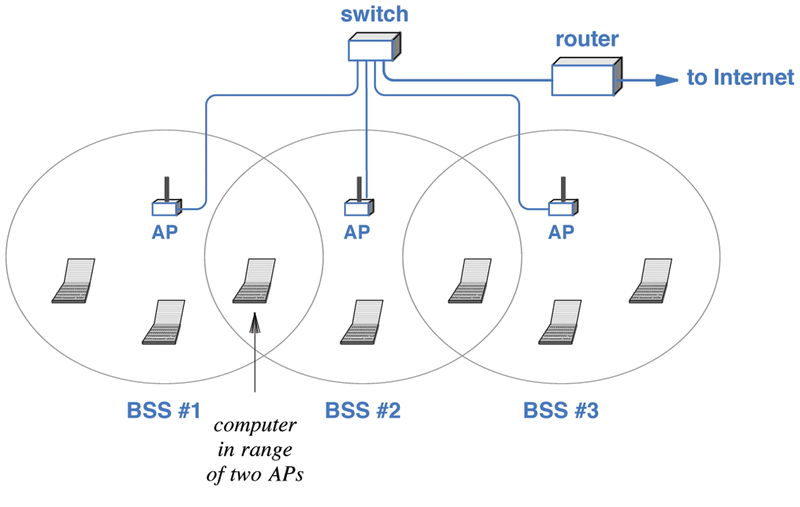First part of Chapter 16.
- Classes of Wireless Network
- Local Area Networks (LAN), mostly WiFi.
- Metropolitan Area Networks (MAN), mostly just theoretical.
- Wide Area Networks (WAN), mostly cell phone and satellite.
- Personal Area Networks (PAN), headphones and such.
- Industrial, Scientific and Medical (ISM) frequencies.
- Governments regulate the use of radio frequencies to prevent chaos.
- Many require licenses, giving a monopoly on a frequency in an area.
- The ISM frequencies are available for any user. WiFi goes here.
- Some regulation about how devices using the frequencies may behave.

- Spread Spectrum
- Techniques generally send data modulating multiple frequencies.
- This increases performance and resists noise.
- Direct Sequence Spread Spectrum (DSSS).
- Before transmission, modulates a known high-frequency signal over the original, and send over a wider channel.
- Receiver knows the high-frequency add-on and removes it.
- Wide channel limits interference, and can allow multiple signals to succeed on the same frequencies, CDMA-style.
- Frequency Hopping Spread Spectrum (FHSS). Send data on a sequence of frequencies, and receiver follows.
- Orthogonal Frequency Division Multiplexing (OFDM). Multiple carries arranged so they do not interfere.
- Direct Sequence Spread Spectrum (DSSS).
- WiFi Standards.
- These are the major ones, and also the original, which is
largely gone.

- These are the major ones, and also the original, which is
largely gone.
- Frame Format
- Don't ask hard questions about what all those fields are.
- WiFi access points generally receive Ethernet frames from the OS, and encapsulate them in the above frame format for transmission.
- The received WiFi frame is rebuilt as Ethernet before delivery to receiving software. That's why Wireshark shows WiFi traffic in Ethernet frames.
- The four (MAC) addresses represent Ethernet sender and receiver (ones actually visible to endpoint software) and wireless sender and receiver.
- Often, some of these are the same.

- Wireless Infrastructure mode.
- Each Access Point (AP) controls a Basic Service Set (BSS) of endpoints
- Endpoints must “associate” with a particular endpoint.
- The endpoints communicate with the access point only, never each other.
- In early WiFi, access points had to coordinate a handoff for a moving station, like a cell tower.
- Now, it's pretty much the endpoint's problem which to associate with.
- Endpoints share their frequency using CSMA/CA. Early standards had the endpoint assign different frequencies so they don't interfere. This was dropped.

- Wireless Ad-Hoc
- Devices connect and reconnect to each other as the can.
- Routing is based on dynamic route discovery as the network changes.
- Not often used.
- Some printers can connect to computers using the ad hoc mode, where the single link presents no routing issue.